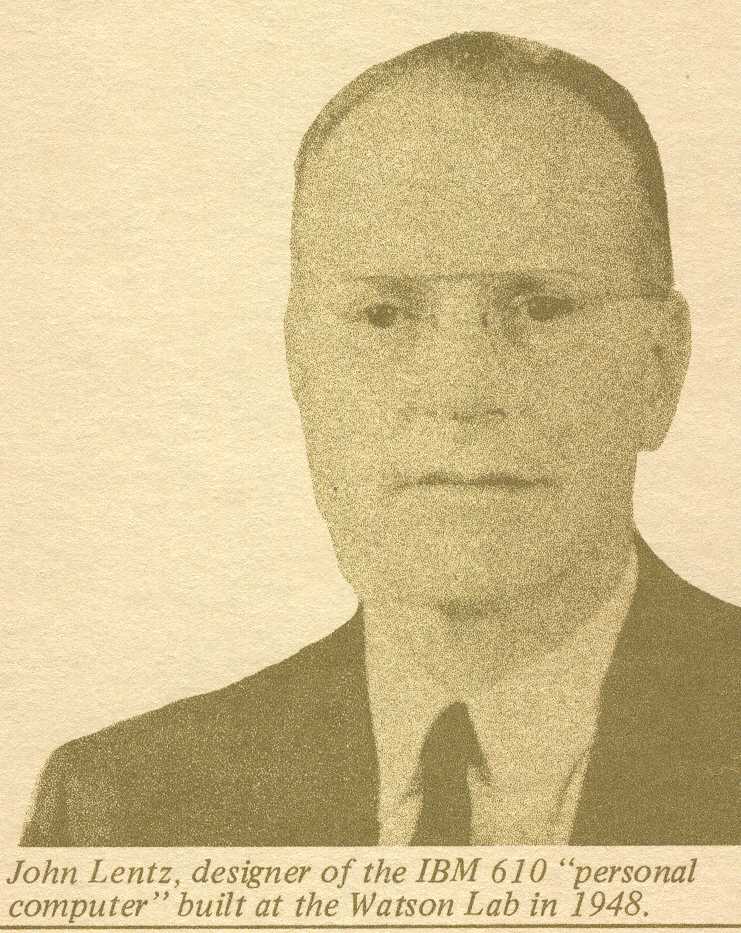John Lentz

|
| Photo: [9], Click to magnify |
Peter Capek of IBM points out that John Lentz is also the inventor of the cursor (as on a video display or computer screen); his patent on it was granted in 1973 or -74, even though he applied for it for many years earlier while at Watson Lab in connection with the small CRT on the IBM 610.
According to Columbia University records, Lentz taught engineering in the School of General Studies from 1955 to 1958. He was officially appointed Adjunct Assistant Professor of Electrical Engineering on May 28, 1956. I believe he took 1960-62 off to earn his Ph.D. at Johns Hopkins University, though I am not sure whether he actually received it. When Watson Lab left Columbia, Lentz went with it and worked at IBM until he retired, where Peter Capek says one of the areas he worked on was programming and perhaps protocol design for JNI job networking, perhaps for JES2 (HASP).
- Lentz, John, "A New Approach to Small-Computer Programming and Control", IBM Journal of Research and Development, Vol.2, No.1, p.72 (1958).
- Lentz, John, and Richard Bennet, "Automatic Measurement of Star Positions", Electronics, Vol.27 No.6 (Jun 1954), pp.158-163.
- Lentz, John, Interview TC-34 in the IBM Oral History of the Computer, conducted by Larry Saphire, 8 Nov 1967.
- Eckert, W.J., and R.B. Jones, "Automatic Measurement of Photographic Star Positions", Astronomical Journal, Vol.59, No.2 (March 1954).
- Eckert, W.J., and Rebecca Jones, "Measuring Engines", in Hiltner, W.A., Astronomical Techniques, Vol II: "Stars and Stellar Systems", U of Chicago Press (1962).
- Grosch, Herbert R.J., Computer: Bit Slices from a Life, Third Millenium Books, Novato CA (1991), ISBN 0-88733-085 [3rd ed mss)].
- Brennan, Jean Ford, The IBM Watson Laboratory at Columbia University: A History, IBM, Armonk NY (1971).
- Bashe, Charles J.; Lyle R. Johnson; John H. Palmer; Emerson W. Pugh, IBM's Early Computers, MIT Press (1985).
- The Charles Babbage Institute lists an IBM 610 manual among its holdings.
- First Personal Computer, IBM Research, accessed 27 May 2019.
- Grosch [57], Chapters 10 and 12.
- Brennan [9], pp.15, 18-19, 43, 49.
- Watson Lab at Columbia University.
- The IBM 610
- IBM Calculators
- John McPherson
- Rebecca Jones